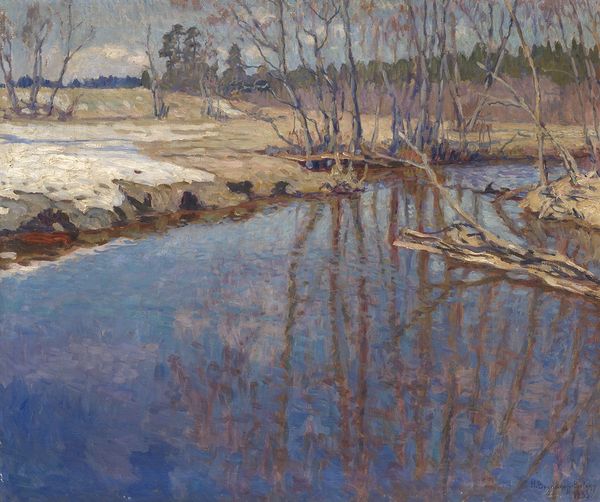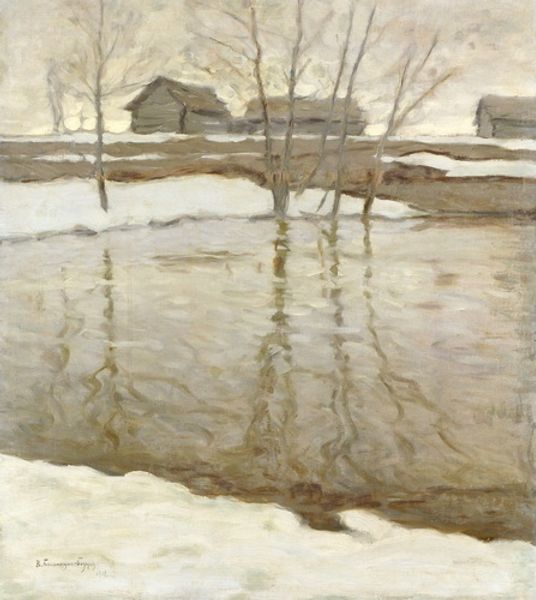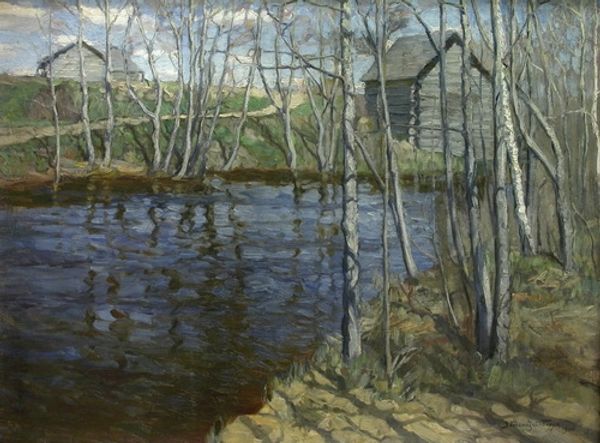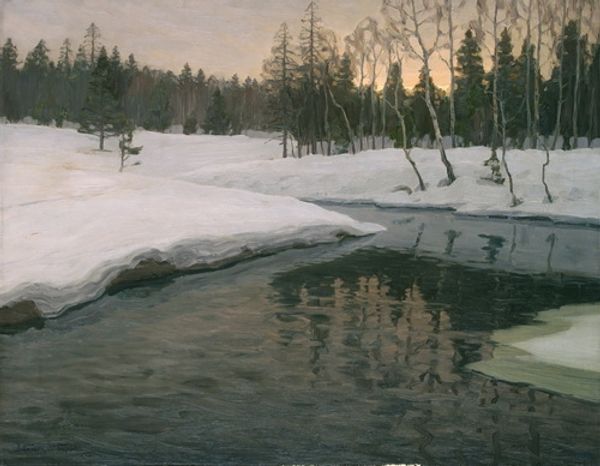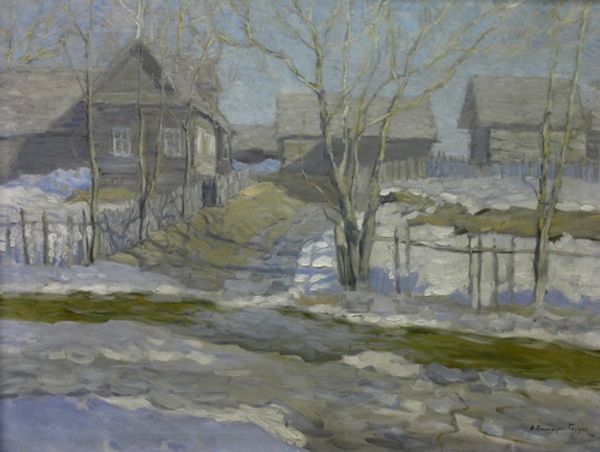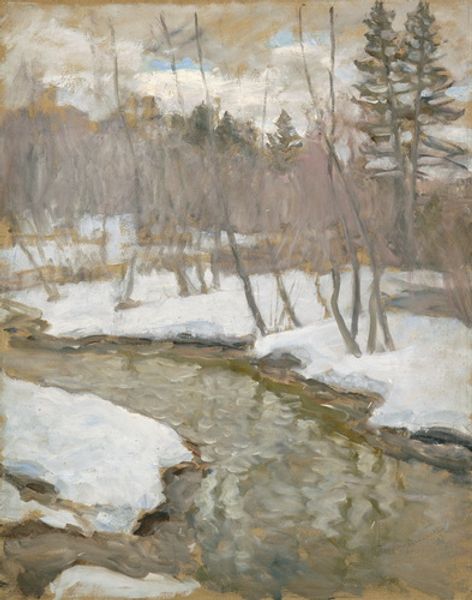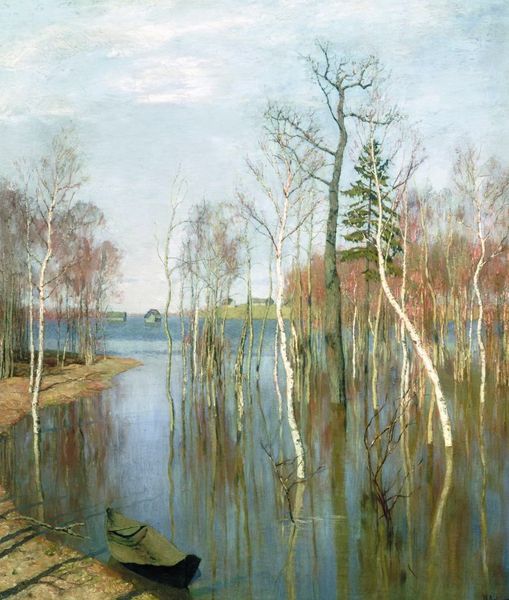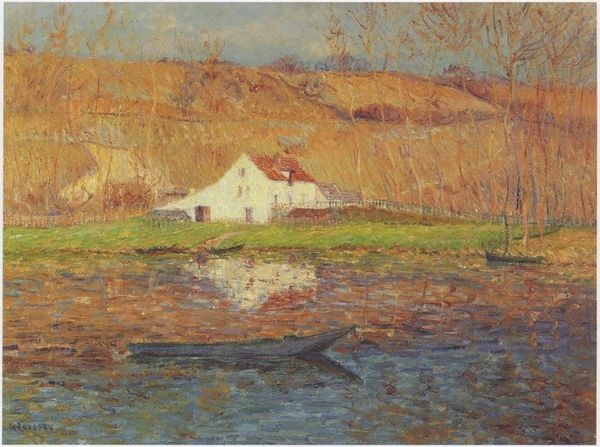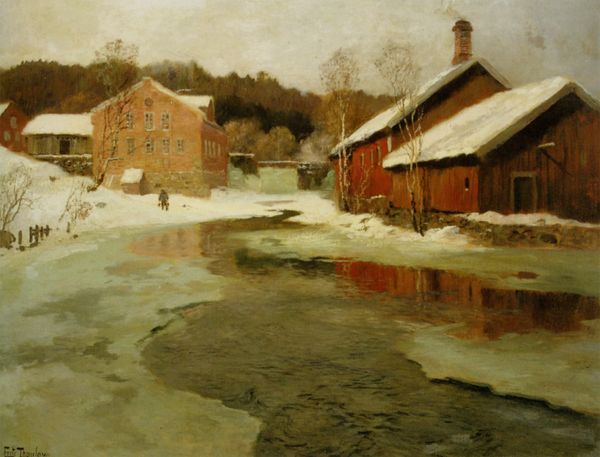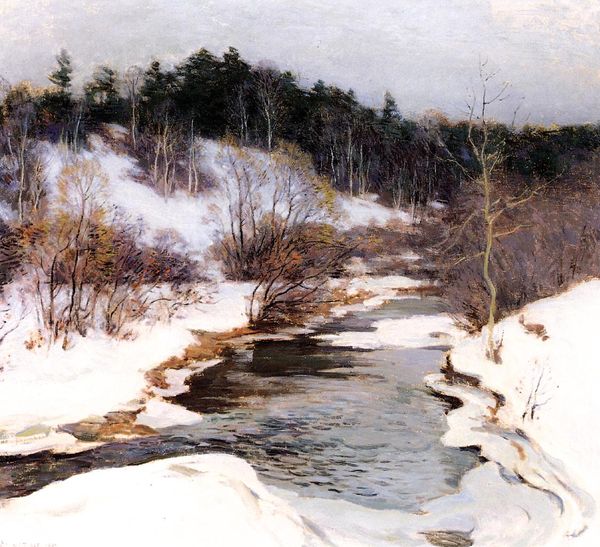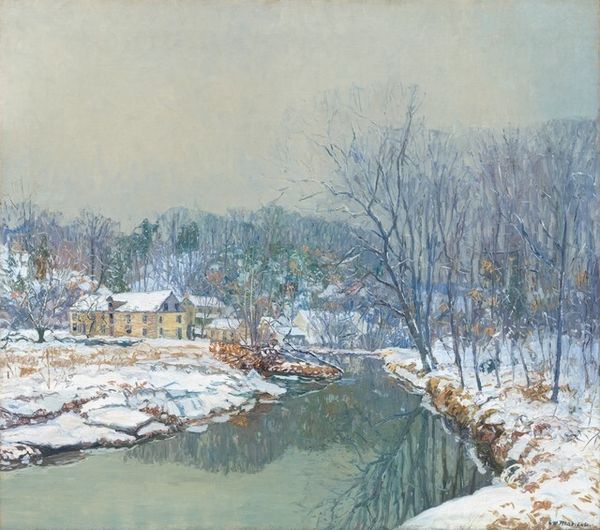
Copyright: Vitold Byalynitsky-Birulya,Fair Use
Editor: Here we have "Thawing Waters. A Seagull. Study." painted in 1927 by Vitold Byalynitsky-Birulya. It’s an oil painting depicting a thaw in the Russian countryside. The melting snow and bare trees give it such a melancholy mood. What do you see in this piece? Curator: I see layers of meaning reflected in the water itself. Notice how the reflections distort the image of the landscape. The water acts as a visual symbol of memory and transformation. Editor: Transformation… like the shift from winter to spring? Curator: Precisely, but also consider what winter symbolizes: dormancy, stillness, perhaps even hardship. The thawing waters aren’t just melting ice; they signify a breaking free, a release of pent-up energy. Do you see any birds? Editor: Now that you mention it, the title references a seagull, but I don’t see it. Curator: Perhaps it's not literal. The 'seagull' might represent hope or the soul's longing for freedom. Think about the traditional associations with birds – messengers, harbingers of change. The artist uses the idea of a seagull rather than the literal presence, loading the symbol with the cultural longing for spring's release from winter's hold. How does that resonate with you? Editor: That really makes me rethink my initial impression. The painting is less about simple melancholy, and more about hope and the promise of something new. Curator: Exactly! The thawing landscape mirrors a psychological thaw. The image suggests that even in apparent stillness, deep transformations are taking place. Art unlocks cultural memory in symbolic forms. Editor: I love how the artist incorporated so much symbolism into what seemed like a simple landscape. It’s a reminder that every detail can contribute to a deeper meaning. Curator: Absolutely. Keep your eye attuned to the language of symbols and the rich, historical reservoir of images and meanings at play in art!
Comments
No comments
Be the first to comment and join the conversation on the ultimate creative platform.
